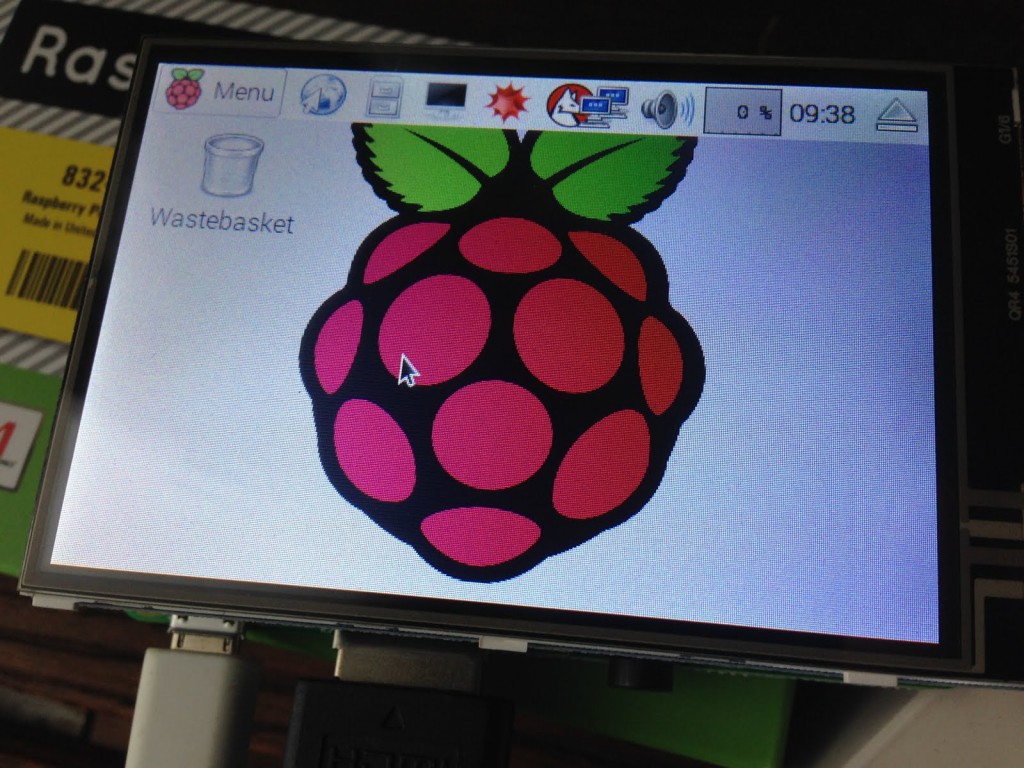Here I show how to attach a WS2812 based LED strip or matrix to the Raspberry Pi.
Short introduction on how to actually install the rpi_ws218x library on the Pi:
-
- Install build essentials:
sudo apt-get update && sudo apt-get install build-essential python-dev git scons swig
- Clone the repository and build the library:
git clone https://github.com/jgarff/rpi_ws281x.git cd rpi_ws281x scons
- Compile and install the Python library:
cd python sudo python setup.py install
- Install build essentials:
Also, I have written this small example program, large parts were taken from the supplied example programs in the repository:
#!/usr/bin/env python
import time
import math
import colorsys
from neopixel import *
# LED strip configuration:
LED_COUNT = 64 # Number of LED pixels.
LED_PIN = 18 # GPIO pin connected to the pixels (must support PWM!).
LED_FREQ_HZ = 800000 # LED signal frequency in hertz (usually 800khz)
LED_DMA = 10 # DMA channel to use for generating signal (try 10)
LED_BRIGHTNESS = 255 # Set to 0 for darkest and 255 for brightest
# True to invert the signal (when using NPN transistor level shift)
LED_INVERT = False
def plasma (w, h, t):
out = [ Color( 0, 0, 0 ) for x in range( w * h ) ]
for x in range( w ):
for y in range( h ):
hue = 4.0 + math.sin( t + x ) + math.sin( t + y / 4.5 ) \
+ math.sin( x + y + t ) + math.sin( math.sqrt( ( x + t ) ** 2.0 + ( y + 1.5 * t ) ** 2.0 ) / 4.0 )
hsv = colorsys.hsv_to_rgb( hue / 8.0, 1, 1 )
out[ x + y * w ] = Color( *[ int( round( c * 10.0 ) ) for c in hsv ] )
return out
# Main program logic follows:
if __name__ == '__main__':
# Create NeoPixel object with appropriate configuration.
strip = Adafruit_NeoPixel(
LED_COUNT,
LED_PIN,
LED_FREQ_HZ,
LED_DMA,
LED_INVERT,
LED_BRIGHTNESS
)
# Intialize the library (must be called once before other functions).
strip.begin()
t = 0.0 # time
dt = 0.1 # speed of time
for i in range( 0, strip.numPixels(), 1): # iterate over all LEDs
strip.setPixelColor( i, Color( 0, 0, 0 ) ) # set LED to black (off)
while True:
t = t + dt # increment time
pic = plasma( 8, 8, t ) # render plasma of size 8x8 at time t
for i in range( 0, strip.numPixels(), 1 ): # iterate over all LEDs
strip.setPixelColor( # set pixel to color in picture
i,
pic[ i ]
)
strip.show() # update LEDs
time.sleep(0.001) # white a short while before loop
 First of all, you need to upgrade the kernel on your brand new Jessie installation:
First of all, you need to upgrade the kernel on your brand new Jessie installation:
